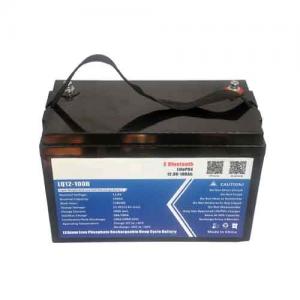The Lowest Temperature for a Lithium Battery to Operate
Lithium batteries can typically operate within a wide range of temperatures, but the specific operating temperature range may vary depending on the chemistry and design of the battery.In general, the lower temperature limit for a lithium battery to operate is around -20°C (-4°F). At temperatures below this threshold, the electrolyte in the battery can freeze, which can damage the battery and cause it to lose capacity or fail altogether.
However, it's important to note that even if a lithium battery can technically operate at low temperatures, its performance and capacity may be reduced. At low temperatures, the chemical reactions inside the battery may slow down, leading to a decrease in voltage and capacity. This can result in reduced run time and power output.
Additionally, at very high temperatures, lithium batteries can also be damaged. The upper temperature limit for lithium batteries varies depending on the specific chemistry and design, but typically falls within the range of 60-80°C (140-176°F). At temperatures above this range, the battery can become unstable and may even catch fire or explode.
When the electrolyte in a lithium-ion battery freezes, it can cause the formation of lithium metal on the surface of the electrodes inside the battery. This can create a physical barrier that prevents the flow of ions between the anode and cathode, effectively blocking the flow of electricity within the battery. This can cause the battery to lose capacity or fail altogether.
Freezing of the electrolyte can also cause mechanical damage to the battery, as the expansion of the frozen electrolyte can cause the battery to bulge or even rupture, leading to leaks or other safety issues.
In addition, when the battery is used at temperatures below its recommended operating range, the chemical reactions that produce electricity may slow down, resulting in reduced capacity and voltage output. This can also cause the battery to discharge more quickly and reduce its overall lifespan.
For these reasons, it's important to follow the manufacturer's guidelines for operating and storing lithium batteries within the recommended temperature range to ensure optimal performance and safety.
To maximize the efficiency of a lithium-ion battery at low temperatures, there are several strategies that can be used:
1.Keep the battery warm: One of the most effective ways to maintain battery efficiency at low temperatures is to keep the battery warm. This can be done by storing the battery in a warm place, such as inside a pocket close to your body, or using a battery case with a built-in heater.
2.Charge the battery at a higher temperature: When charging a battery at low temperatures, the charging rate should be reduced to avoid damage to the battery. However, charging the battery at a slightly higher temperature than the ambient temperature can help increase the charging rate and improve battery performance.
3.Reduce the load on the battery: When using the battery in cold weather, try to reduce the load on the battery by lowering the screen brightness, disabling features like Bluetooth or Wi-Fi, and avoiding heavy usage like gaming or video playback. This can help reduce the power draw on the battery and extend its runtime.
4.Use the battery regularly: Lithium-ion batteries can degrade over time, especially if they are left unused for extended periods. Using the battery regularly, even in cold weather, can help keep the battery active and prolong its lifespan.
5.Store the battery properly: When not in use, lithium-ion batteries should be stored in a cool, dry place away from direct sunlight and other heat sources. This can help prevent damage to the battery and extend its lifespan.
By following these tips, you can help maximize the efficiency of your lithium-ion battery in low temperatures and ensure that it performs optimally over the long term.
How Long can a Lithium Battery Run?
The runtime of a lithium-ion battery depends on several factors, including the capacity of the battery, the power requirements of the device it is powering, and how the device is being used.
The capacity of a lithium-ion battery is typically measured in milliampere-hours (mAh) or watt-hours (Wh). For example, a battery with a capacity of 3,000mAh can theoretically provide 3,000mA of current for one hour, or 1,500mA for two hours, and so on.
The power requirements of the device being powered by the battery can vary widely depending on the type of device and how it is being used. For example, a smartphone with a large, high-resolution screen and a powerful processor will require more power than a simple feature phone with a smaller screen and a less powerful processor.
Finally, how the device is being used can also impact battery life. For example, using power-intensive features like video playback or gaming will consume more power than simply making phone calls or sending text messages.
Given all these factors, the runtime of a lithium-ion battery can vary widely. For example, a typical smartphone might have a battery capacity of around 3,000mAh and provide 10-15 hours of talk time, or 6-8 hours of screen-on time when used for activities like web browsing or video playback. A laptop computer with a lithium-ion battery might provide 4-10 hours of runtime depending on the battery capacity, screen size, processor, and other factors.
It's important to note that the runtime of a lithium-ion battery can be affected by factors such as age, temperature, and usage patterns. Over time, the capacity of a lithium-ion battery will naturally degrade, reducing its runtime. Additionally, exposing the battery to high temperatures or using it in extreme conditions can also reduce its performance and lifespan.





